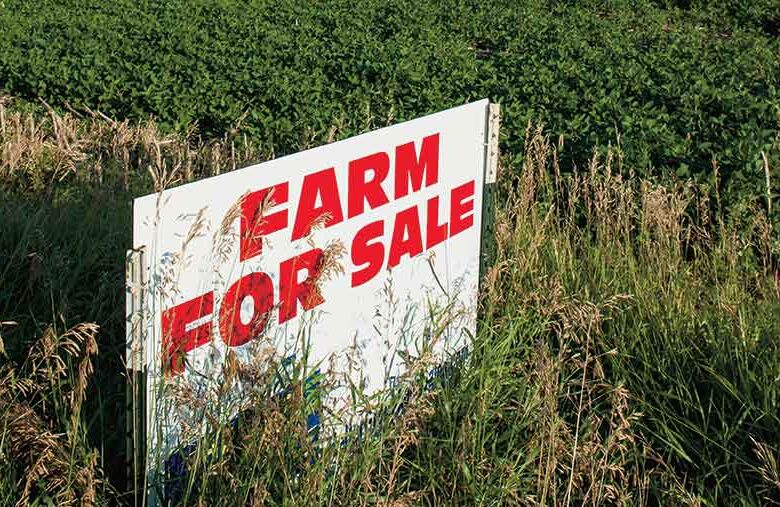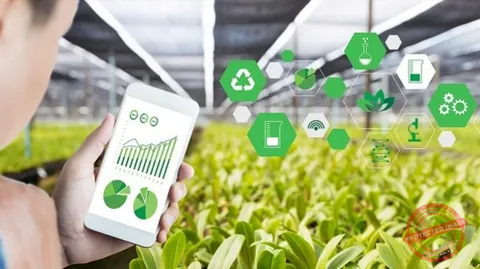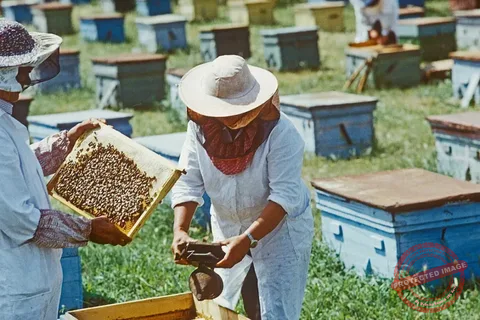If you’ve ever tried to grow vegetables or flowers in pots and noticed your plants just… stop growing, you’re not alone. You water them faithfully, give them sun, maybe even talk to them a little (I won’t judge—I do it too), yet they just sit there, looking tired. Then you check the soil and realize it feels hard, almost like a brick. That, my friend, is soil compaction—the silent killer of container gardens.
I still remember one summer when my tomato plants looked as if they had lost their will to live. The leaves were droopy, the growth was stunted, and no matter how much I watered, the soil stayed bone dry on top and soggy at the bottom. When I finally dug my hand in, I found the problem: the soil had compacted so tightly the roots couldn’t breathe. It felt like the earth had gone on strike. That’s when I truly learned that soil isn’t just “dirt”—it’s alive, and it needs space to breathe.
If you grow in containers—whether you’re on a balcony, a backyard, or a full-blown homestead—understanding how to prevent soil compaction is key. It’s what separates lush, thriving plants from sad, stunted ones. So let’s dig into it (pun totally intended). Here’s how to keep your potting soil fluffy, airy, and alive, so your plants can stretch their roots and thank you later.
What Is Soil Compaction Anyway?
Soil compaction happens when the particles in your growing medium get pressed too tightly together. That reduces the air pockets that roots need for oxygen and water movement. Without those spaces, roots suffocate. It’s like trying to breathe through a wet towel.
In the garden bed, worms, roots, and rain help loosen things naturally. But in containers, it’s a closed system. Watering, pressing down soil during planting, or even heavy rains can compact the soil over time. Once it happens, your plants struggle, and drainage slows down.
Why Container Soil Compaction Is Worse Than in the Ground
In the open garden, nature has helpers—worms, insects, and microorganisms constantly moving through the soil, keeping it aerated. But in containers, that ecosystem is smaller and more fragile. Every watering session and every bit of root growth pushes the soil tighter.
It’s even worse if you use regular garden soil in pots. It’s too dense, and when it dries, it hardens like cement. That’s why potting mix is so important—it’s designed to be airy. Still, even the best mix can compact over time if you don’t take a few extra steps to keep it healthy.
Signs of Compacted Soil in Containers
You can’t always see compaction right away, but your plants will tell you. Look for these signs:
-
Water pooling on the surface instead of soaking in
-
Stunted or yellowing plants despite regular feeding
-
Roots circling the top or sides of the container
-
Soil pulling away from the edges when dry
-
Mushy, lifeless soil that feels heavy and dense
If any of this sounds familiar, it’s time to loosen things up—literally.
Tip 1: Start With the Right Potting Mix
The best way to prevent compaction is to start with a high-quality potting mix. Not garden soil, not “topsoil,” but a mix made specifically for containers. Look for ingredients like perlite, vermiculite, coconut coir, or peat moss—these keep the soil airy.
I like to mix my own sometimes. A simple blend of one part compost, one part coco coir, and one part perlite works wonders. It drains well but still holds moisture. Think of it as giving your plants a mattress that’s soft enough to sink into but firm enough to support growth.
Tip 2: Avoid Pressing Down the Soil Too Much
When you plant in containers, it’s tempting to press the soil down to “fit more in.” Don’t do it. Lightly patting the soil is fine, but pressing it too hard squeezes out air pockets. Those tiny spaces are what keep your soil breathing.
I once taught a neighbor this the hard way. He filled his bucket with soil, patted it down tight like he was making cement, then planted lettuce. A week later, the seedlings were limp. I told him to repot gently—loosen the mix, don’t crush it. Two weeks later, his lettuce was thriving.
Tip 3: Use Perennial Fabric or Mesh Liners
This one might surprise you, but lining the bottom of your pots with perennial fabric or a breathable mesh can help. It keeps soil from compacting at the base by improving drainage and preventing clogging.
Water can escape freely, but the liner stops fine particles from washing away. It also reduces the risk of the soil sitting in stagnant water, which leads to compaction and root rot. I started using perennial fabric under my grow bags, and the difference was night and day—roots stayed healthier, and the soil stayed fluffier.
Tip 4: Don’t Overwater
Watering is a balance. Too little, and the soil becomes dry and crumbly. Too much, and it turns heavy and compacted. Over time, constant saturation pushes the air out of the soil.
A good rule is to water deeply but less often. Let the top inch of soil dry before watering again. If your container has no drainage holes, fix that immediately. Roots sitting in water are doomed from the start.
Tip 5: Add Organic Matter Regularly
Organic matter keeps soil alive and loose. It feeds microbes and encourages earthworms (if you use large outdoor containers). Mix compost into the top few inches of your soil every few weeks during the growing season.
When compost breaks down, it creates tiny pockets that improve aeration. It’s like having a natural tiller inside your pot. Plus, your plants will thank you for the extra nutrients.
Tip 6: Loosen the Top Layer Occasionally
If your soil looks crusty or compacted on top, gently break it up with a hand fork or even your fingers. Do it carefully—don’t damage roots. This simple habit keeps the surface open for air and water.
I usually do this after every heavy rain. It only takes a minute, but it makes a big difference. The soil feels softer, and the water starts soaking in again instead of running off.
Tip 7: Rotate and Refresh Old Soil
If you reuse the same potting mix season after season, it can lose structure. Old roots, salts, and compressed particles all add up. At the start of each planting season, empty your containers, break up the soil, and mix in fresh compost, perlite, or coco coir.
I rotate my container soil like I rotate crops. Every spring, I dump it out onto a tarp, add a few handfuls of compost, and fluff it back up. It’s like giving your soil a fresh breath of air.
Tip 8: Choose the Right Containers
Heavy clay pots can make compaction worse because they retain moisture longer. Plastic and fabric containers, on the other hand, tend to breathe better.
Fabric pots, especially those made with perennial fabric, are my favorites. They let air flow through the sides, preventing the roots from circling and keeping the soil oxygenated. You can actually feel the difference—plants in fabric pots are livelier and bounce back faster after watering.
Tip 9: Encourage Root Health
Healthy roots help prevent compaction naturally. When roots are strong and spread evenly, they create their own air pathways through the soil.
Feed your plants with a mild organic fertilizer and avoid overcrowding. When too many roots share one pot, they compete for space and compress the soil even faster. Give them room to grow.
Tip 10: Add Aeration Amendments
If you notice your soil compacting easily, add materials that increase air space. Perlite, pumice, and rice hulls all work well. Some growers even mix in small amounts of coarse sand or bark chips.
You can also try adding biochar—a charcoal-like substance that improves drainage and supports beneficial microbes. I’ve used it in my herb containers, and the soil stayed light even through heavy rains.
Real-Life Example: The Potato Bucket Lesson
A few seasons ago, I planted potatoes in a big 20-liter bucket. I was excited, maybe a little too eager. I filled it up with heavy soil and tamped it down to make room for more. By midseason, the leaves started to yellow, and the harvest was disappointing.
The next year, I tried again—but this time, I mixed in perlite and compost, lined the bottom with perennial fabric, and didn’t press the soil. The result? A bucket full of plump, happy potatoes. Lesson learned: fluffy soil equals healthy roots and better yields.
How-To: Fix Compacted Soil in Containers
If your soil is already compacted, don’t panic. You can still save it. Here’s how:
-
Gently remove the plant and set it aside.
-
Break up the soil with your hands or a trowel. If it’s too wet, let it dry a bit first.
-
Mix in aeration materials like perlite, compost, or coco coir.
-
Line the bottom with perennial fabric before replanting to improve drainage.
-
Replant carefully, avoiding over-packing the soil. Water lightly to settle it in.
Within a week or two, your plants should show signs of recovery—new growth, greener leaves, and happier roots.
FAQs on Preventing Container Soil Compaction
Q1: Can I reuse compacted soil next season?
Yes, but you’ll need to rejuvenate it first. Mix in organic matter and aeration materials, then let it rest for a few weeks before planting again.
Q2: Is it okay to use garden soil in containers if I mix it?
Only if you lighten it up with perlite, compost, and coco coir. Straight garden soil is too dense for pots.
Q3: Do earthworms help with soil compaction in pots?
Yes, but only in large containers. In small pots, they can struggle. If you want natural aeration, use compost or biochar instead.
Q4: How often should I refresh container soil?
At least once a year. After each growing season, loosen, mix, and feed your soil before planting again.
Q5: What’s the best pot type to prevent compaction?
Fabric pots or containers lined with perennial fabric work wonders because they breathe and drain better than solid ones.
Keeping container soil light and airy isn’t complicated—it’s just about paying attention to the small things. Give your soil space to breathe, your roots room to stretch, and your plants a fighting chance to thrive.
Out here on the farm, I’ve learned that the happiest plants are the ones whose roots never stop exploring. Keep your soil alive, and your plants will reward you tenfold.
So, what kind of containers are you growing in this season—and how’s your soil holding up?

![How To Start Organic Farming In UAE [Beginner’s Guide]](https://agrolearner.com/wp-content/uploads/2023/12/Organic-Farming-780x520.jpg)

